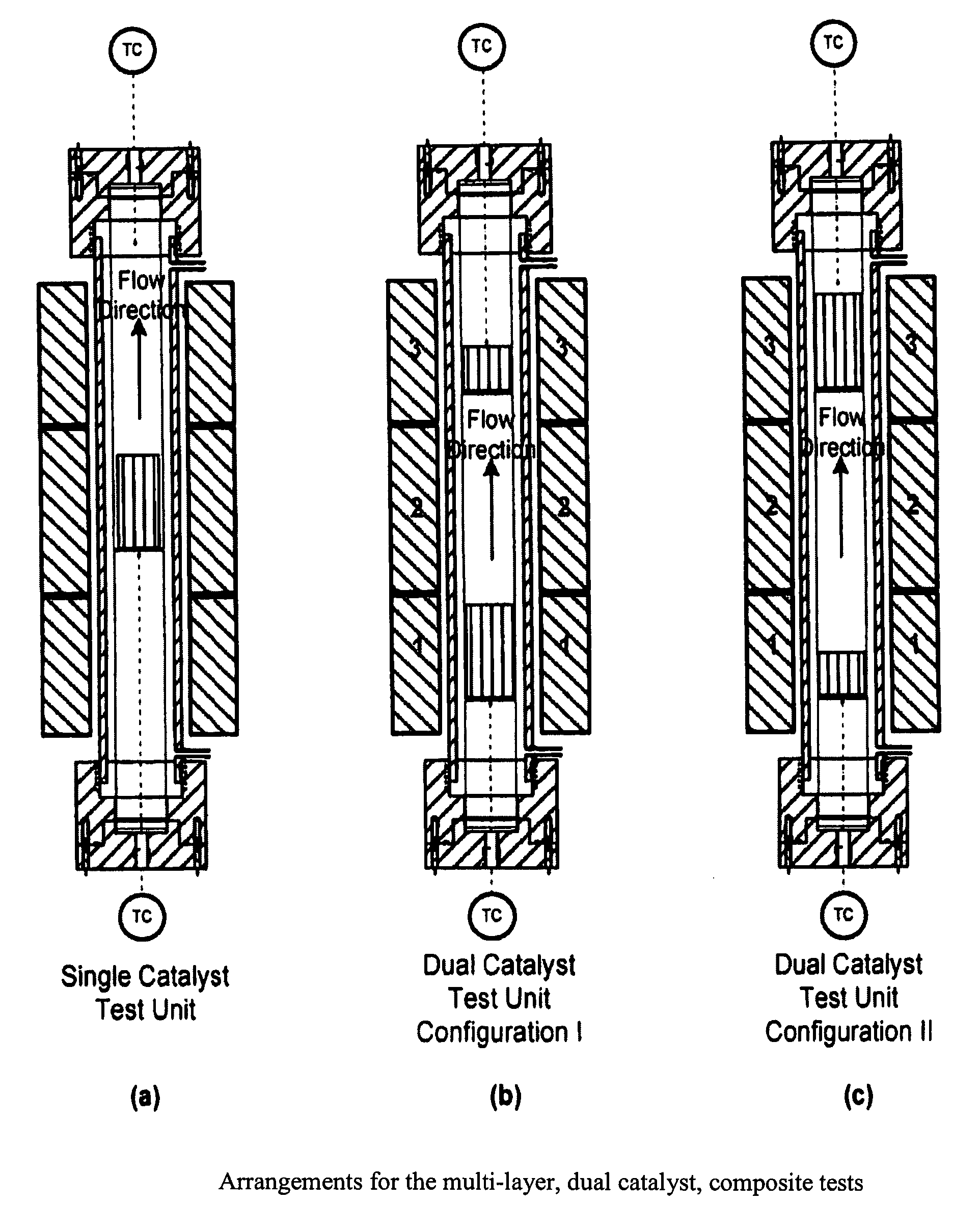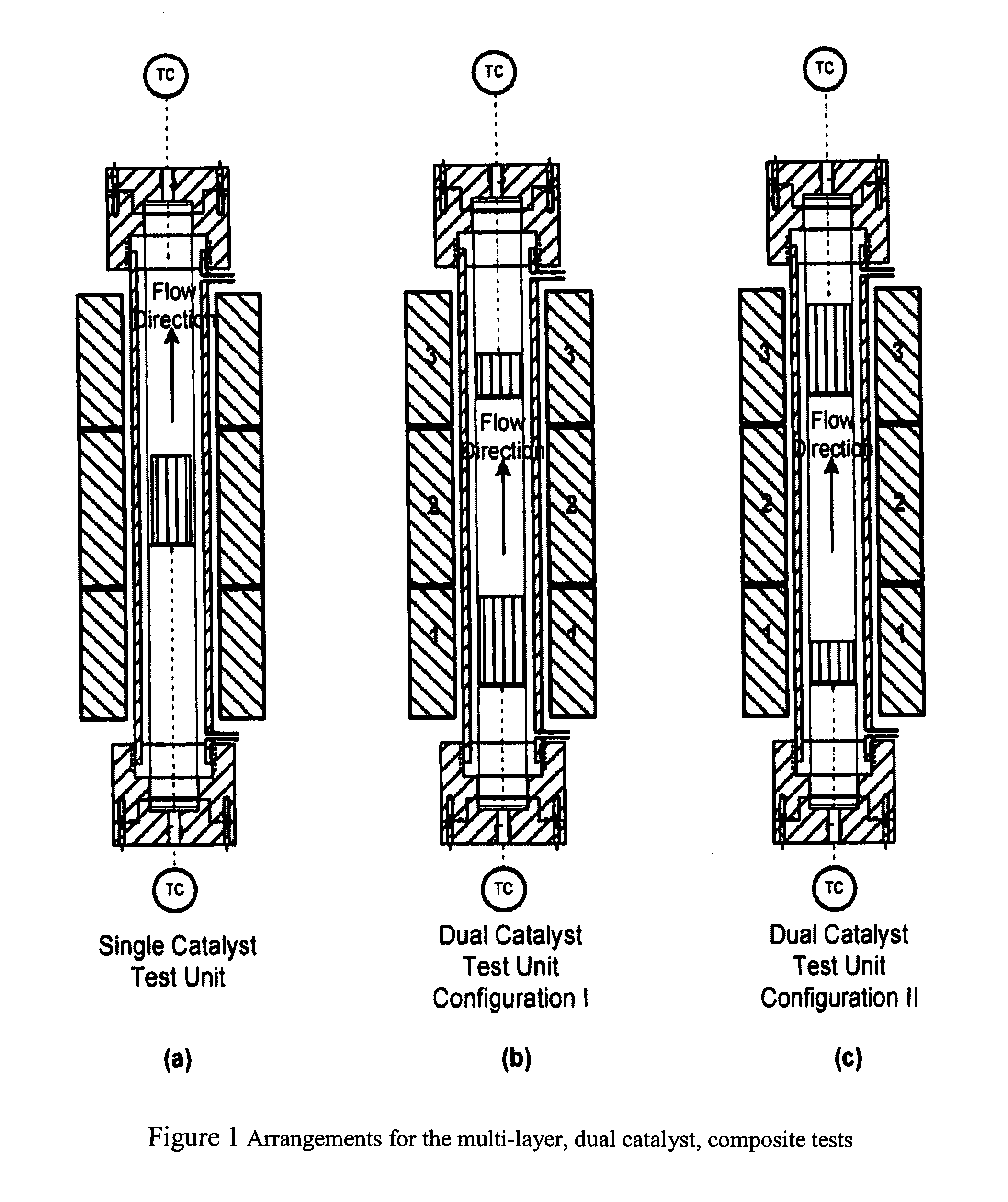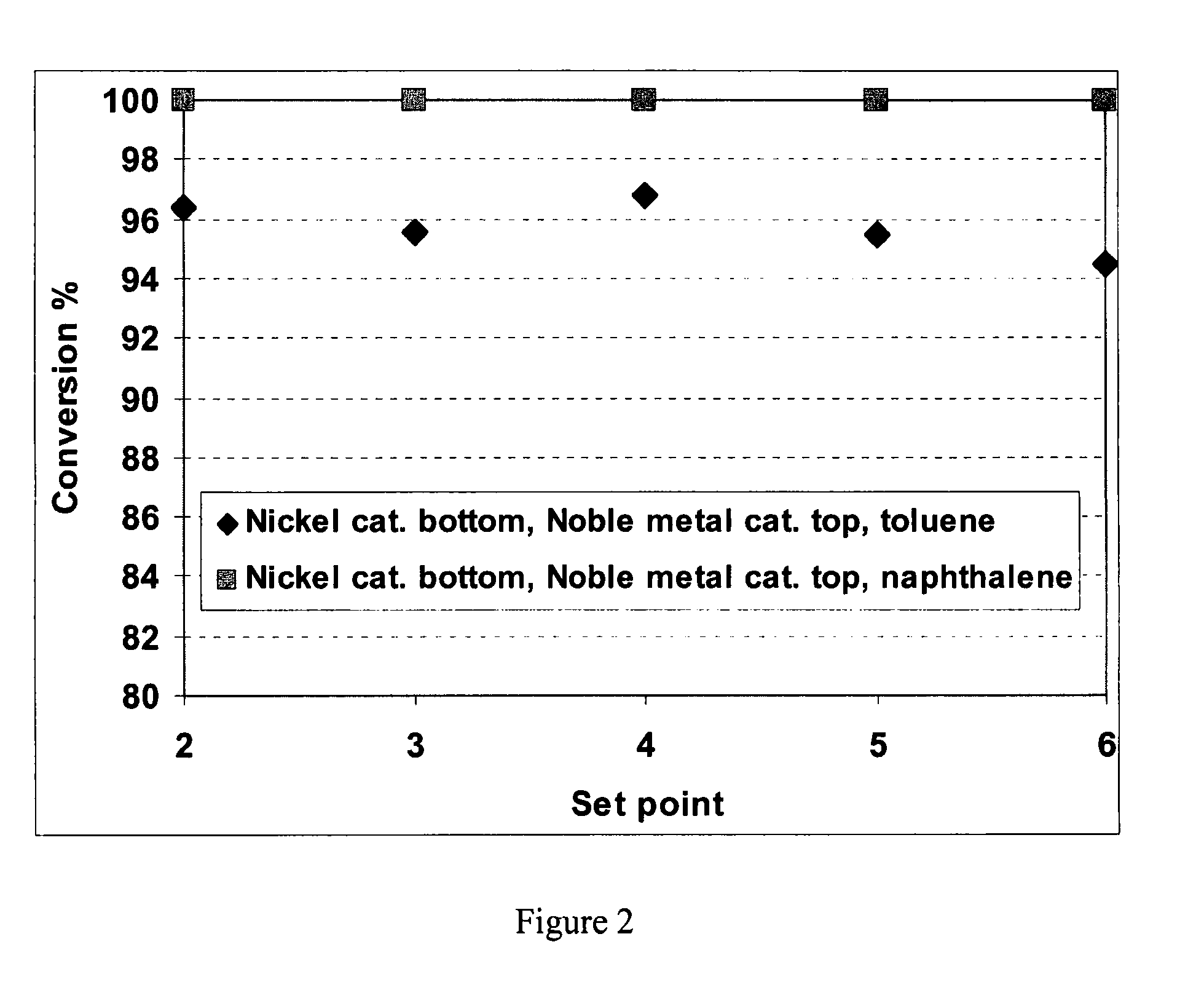Process and apparatus for reforming of heavy and light hydrocarbons from product gas of biomass gasification
- Summary
- Abstract
- Description
- Claims
- Application Information
AI Technical Summary
Benefits of technology
Problems solved by technology
Method used
Image
Examples
example 1
Testing of the Multi-Layer Dual Catalyst Reactors
[0030]Reformer catalysts are typically tested with the “single catalyst test unit” arrangement as shown in FIG. 1(a). Please note that while catalyst units may be oriented in any direction, it is illustrated in FIG. 1 with the flow from the bottom to the top. That is, the bottom catalyst will contact the gas flow first. The top catalyst will contact the gas flow second—after the gas has flowed passed the first catalyst.
[0031]In this arrangement, a sample of solid catalyst is put into an externally heated oven. The solid catalyst material comprises a structure made with the one or more active catalyst materials (active catalyst sites) which also comprises pores and holes to enable gases to flow through and get into contact with the one or more active catalyst materials. In the laboratory tests, the tested catalyst samples have been either nickel-metal based or noble metal based. The externally heated oven is heated up to typical proces...
PUM
 Login to View More
Login to View More Abstract
Description
Claims
Application Information
 Login to View More
Login to View More - Generate Ideas
- Intellectual Property
- Life Sciences
- Materials
- Tech Scout
- Unparalleled Data Quality
- Higher Quality Content
- 60% Fewer Hallucinations
Browse by: Latest US Patents, China's latest patents, Technical Efficacy Thesaurus, Application Domain, Technology Topic, Popular Technical Reports.
© 2025 PatSnap. All rights reserved.Legal|Privacy policy|Modern Slavery Act Transparency Statement|Sitemap|About US| Contact US: help@patsnap.com



